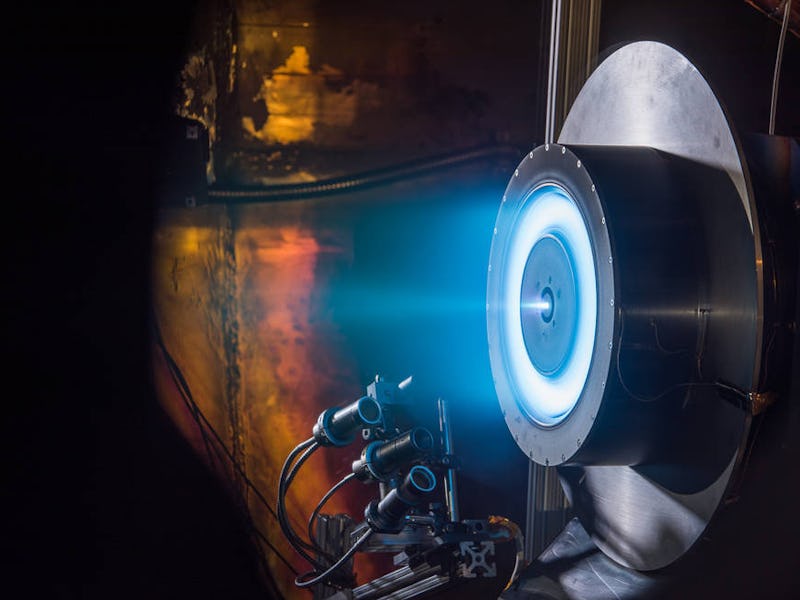NASA Orders a New Solar-Powered Ion Engine to Explore Deep Space and Go to Mars
Electric propulsion engines could take us a lot further than rocket fuel can.

We already know electric engines are the future of automobiles, and NASA thinks they’re the future of spaceflight as well. Today, NASA awarded a contract to Aerojet Rocketdyne, Inc. to design a new Advanced Electric Propulsion System, mainly for use on robotic deep space ships like those used in its Asteroid Redirect Mission.
Electric propulsion tech has been around for more than fifty years, and it’s already widely used on long distance deep space expeditions like the Dawn mission, which is surveying the giant asteroid Vesta (last seen 156 million miles from Earth) and the protoplanet Ceres between 2011 and 2015.
Unlike electric engines in cars, electric propulsion systems still use a fuel-based propellant, they’re just way more efficient than traditional engines. An electric ion engine takes a fuel source (usually xenon or another argon gas) and ionizes it (takes off an electron), then shoots that ion out of the back of the spacecraft (and spraying out some electrons so the whole thing stays electrically neutral). It uses on-board solar panels to energize and ionize the fuel. They’re way more efficient than burning conventional fuel, which makes them perfect for long-range missions. They don’t, however, generate a tremendous amount of thrust, which means they can’t be used for taking off directly from a planet (sorry, Star Wars), but they can push big heavy stuff through space for a long, long time on not a lot of fuel.
You're looking at the business end.
NASA hopes that Aerojet’s new engine will increase fuel efficiency to more than 10 times the current rate of conventional chemical fuel (just burnin’ stuff and shooting it out the back, no funny ion business), and double the thrust capability compared to current electric systems (which means faster trips). The new engine’s meant for a pretty crazy purpose too — one of its first tests may be on NASA’s Asteroid Redirect Mission, where it will attempt to capture an asteroid, push it all the way to the moon, and put it in orbit. To sum up, NASA wants to use solar-powered ion engines to steal an asteroid and put it near the moon, giving our moon a moon of its own. Science, man, whoo-wee.
We’ll know more on Thursday, when NASA is holding a press conference call to talk about the new engine project. The AEPS contract lasts for 36 months, and is valued at around $67 million, in which Aerojet will design, construct, and test the engine.